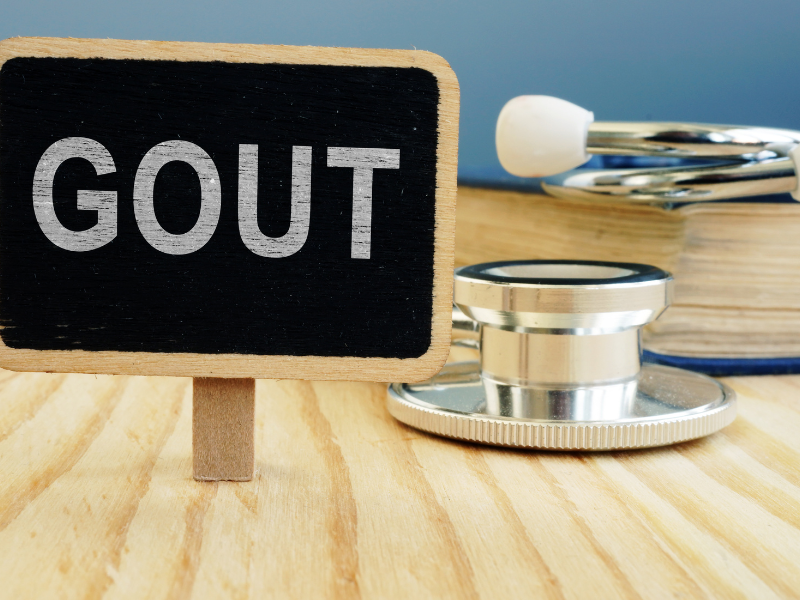Gout

A gout is a painful form of arthritis. Sharp crystals can grow in your joints if your body has an excess of uric acid. Gout attacks are periods in which symptoms such as swelling and pain flare up and disappear. Treatment is usually a combination of symptom management and dietary changes.
What is Gout?
Gout is the most common kind of inflammatory arthritis. It causes acute and sudden bouts of joint pain, most typically in the big toe and during the night. It can also strike joints in other joints, including:
· Toes
· the ankle
· the knee
· elbows
· Feet
· Hands and wrists
People who have osteoarthritis in their fingers may get their first gout episode in their finger joints.
Gout affects men three times more than women. It often affects men after the age of 40 and women after menopause, when the protective effects of estrogen are no longer present.
The symptoms of gout can be mistaken for those of calcium pyrophosphate deposition (CPPD). CPPD is a different kind of arthritis that was once known as pseudogout. The crystal that causes gout is due to calcium phosphate rather than uric acid.
What Causes Gout?
Some persons with high uric acid levels develop gout as a result of the body breaking down purines. Purines are natural substances present in all cells. They are found in a wide variety of meals, including:
· red meat
· organ meats
· some seafood
· sugar-filled beverages
· beer
Uric acid that accumulates in the body can form needle-like crystals. These crystals get lodged in joints. Thus, produces abrupt, excruciating pain and swelling. Uric accumulation happens:
· from excessive consumption of a high-purine diet
· the kidneys aren’t excreting it enough
Whether or not therapy is given, gout attacks usually peak in intensity in 12 to 24 hours. It then progressively fades away on its own.
Risk Factors for Gout
Anyone can get gout. Gout is three times more common in those classified as masculine at birth (AMAB). Gout typically doesn’t appear in people who were designated female at birth (AFAB) until after menopause.
Individuals who have particular medical disorders, such as the following, are more susceptible to gout:
· Overweight or obese
· Cancer of the blood
· Diabetes
· Congestive heart failure
· Kidney disease
The following increases your risk of developing gout:
· You take immunosuppressants.
· Your parent or grandmother has gout.
· You take diuretic medication.
· You consume a lot of animal proteins.
· You have alcohol regularly.
· Consume water pills or diuretics.
How is Gout Treated?
Gout treatment typically involves a combination of managing symptoms during a flare-up and reducing the consumption of high-purine foods and drinks.
1. Gout Medication
Your healthcare provider may recommend medications to help control symptoms, including:
· NSAIDs: Over-the-counter NSAIDs can alleviate pain and swelling during a gout attack. This includes:
o Ibuprofen
o Naproxen
· Corticosteroids: Corticosteroids are anti-inflammatory prescription drugs. Your physician may prescribe oral or injectable prescription drugs for gout.
· Colchicine: Colchicine can lessen discomfort and inflammation if taken within 24 hours of a gout episode.
Other medications that help lower the uric acid level include:
· Febuxostat
· Allopurinol
· Probenecid
2. A diet low in purine
Your doctor may recommend a diet low-purine. This involves consuming fewer foods and drinks with high purine content. Doing this helps lower the uric acid levels in your body. Additionally, it encourages the intake of specific foods that may contribute to reducing uric acid levels.



